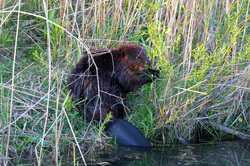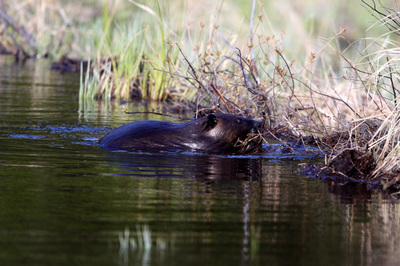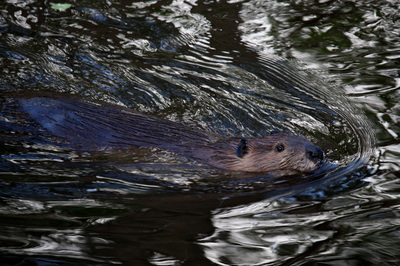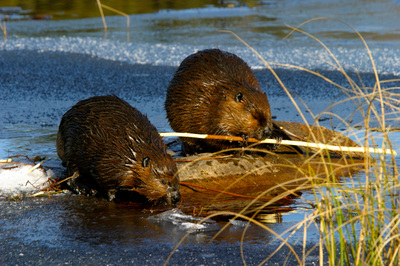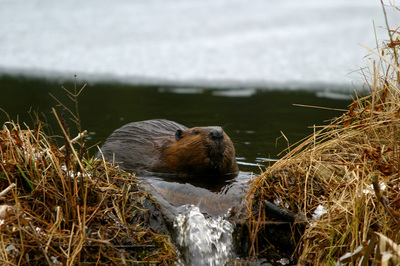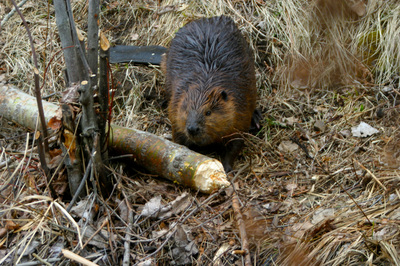American BeaverNorth America’s largest rodent is found in more places today than ever. Adult beavers can weigh between 16 and 35 kilograms and among the rodent family only the South American capybara exceeds them in weight ranging from 35 to 70 kilograms. Twelve thousand years ago the North America’s giant beaver made both of these modern-day rodents look small. It was the size a black bear and weighed up to 200 kilograms. It died out at the end of the last ice age. American beavers once were estimated to number over 60 million animals. Indeed, without them North America might be a very different place today. English and French fur trappers and traders, followed in the 1800’s by American trappers helped open up the continent as they sought this species for its rich fur. The Hudson’s Bay Company was largely supported by beaver furs until the mid-1800’s when the fashion demand for beaver hats finally ended. By then the beaver was eradicated from most of North America. Since then laws have been enacted to help protect the beaver and bring it back. As the species increased in numbers they were reintroduced into much of their old range and even into locations where they were not historically found. They are now found in every Canadian province and every State except Hawaii. Today almost 20 million beaver are believed to live on the continent. Beaver are known of their dam building and creating wetlands. Road builders and land owners often decry the beaver’s efforts as these dams can cause unwanted flooding. They are well known as one of the few species (we are another) that can alter their environment to suit their needs. While the evolution of a watershed due to beaver activity has long been understood recent studies have encountered new findings about the beaver’s important effect on the water table. The process seems simple enough. Beavers find a stream to their liking. If it is not deep enough they dam it creating a pond or small lake. Eventually the lake silts up and beaver moves on. The dam rots and the wet land drains leaving a meadow which eventually becomes a forest again with a stream flowing through it. Each transition benefits or stresses different types of plans and animals including fish. What was not known until recently was the positive effect that these dams have on the water table. The effect of the dam is not confined to just the surface area. The water is also stored below ground in an area much larger than the surface water would indicate. Relocated beavers in the southern United States and the Canadian Prairie Provinces are helping to conserve water, especially ground water, in a very effective manner. Although beavers do consume a lot of trees, they also spend a lot of time in the summer feeding on forbs and water plants. They are monogamous and a lodge might be home to three generations of beaver, the parents, and last year’s young and this year’s young. As the young mature they set out to find new watersheds to set up their own lodges and dams. They are not at all averse to travelling a few kilometers over land. It would be a mistake to assume the beavers always build dams and lodges. Anglers on big lakes and rivers should not be surprised to see a beaver swimming along the shore with no lodge in sight. If the water is deep enough there is no need for a dam and as to a lodge, well beavers are quite happy to dig dens in the bank. Note: A version of this article first appeared in Bob Izumi's Real Fishing Magazine in Dave's column At the Water's Edge. It is used with the permission of editor. |
|
All images and text are copyright © 2016 J.D. Taylor Senses of Wildness Inc. These images may not be used in any form without permission. All rights reserved.
